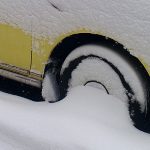MOT – Inspection Section and Sub-Sections
Below are the sections, sub-sections and subject items checked throughout the MOT test check that generates MOT failure codes:
Section 1: Lamps, Reflectors and Electrical Equipment
Lamps are usually checked to ensure the lighting and signalling are in good condition, reflectors are checked for their colour and positioning and electrical equipment, such as; the horn, battery, wiring etc are checked with a single operation of the switch. If the engine warning light is on during an MOT test then the vehicle will fail. The major risks of driving with the engine light on, relate to road safety of other motorists and an impact on the environment. It is not advised to drive until the issue has been resolved by a reputable garage.
1.1 Front and Rear Position Lamps and Registration Plate Lamps
a. Front and rear position lamps
b. End outline marker lamps
c. Registration plate lamps
1.2 Stop Lamps
1.3 Rear Fog Lamps
1.4 Direction Indicators and Hazard Warning Lamps
a. Flashing type
b. Hazard warning device
c. Semaphore type
1.5 Rear Reflectors
1.6 Audible Warning (Horn)
1.7 Headlamps
1.8 Headlamp Aim
a. All headlamps
b. European ‘E’ Beam Headlamps
c. British American Type (Main Beam)
d. British American Type (Dipped Beam)
1.9 Electrical Wiring and Batter
Section 2: Steering and Suspension
Steering is usually checked by pushing the steering wheel in different directions. Suspension is unlike other tests, it is a bit complex in comparison to others. It is usually tested by elevating the vehicle on a lift to inspect the suspension.
2.1 Steering control
2.2 Steering System
2.3 Power Steering
2.4 Suspension – General
a. All suspension types
b. Leaf springs
c. Coil springs
d. Fluid/gas/air suspension
e. Torsion bars
f. Bonded suspension units
g. Suspension arms and linkages, sub-frames etc
2.5 Front Suspension Front Wheel Bearings and Drive Shafts
a. Suspension joints and wheel bearings (wheels jacked)
b. Suspension joints (wheel on turning plates)
c. Front wheel drive shafts and couplings
2.6 Rear Suspension and Wheel Bearings
2.7 Shock Absorbers
2.8 Suspension Type Diagrams
Section 3: Brakes
Brakes are usually checked for their efficiency and balance on the road with a roller brake tester. During an MOT test, a vehicle’s brake pads and discs are checked. If the brake pads are below 3mm, you will be advised to change them, however, the legal limit is 1.5mm and if your brake pads are below this you will fail your MOT test.
3.1 Parking Brake Control
3.2 Hand Operated Brake Control Valves
3.3 Service Brake Control
a. All types of braking systems
b. Hydraulic systems (including servo-assisted)
c. Vehicles with High Servo Boost
d. Full power hydraulic braking systems
e. Air and vacuum systems
3.4 Anti-lock Braking and Electronic Stability Control Systems
3.5 Mechanical Brake Components
3.6 Braking Systems and Additional Braking Devices
a. All braking systems
b. Brake pipes and flexible hoses
c. Servos and master cylinders
d. Reservoirs (air/vacuum), including accumulators, pressure and vacuum vessels
e. Valves
f. Pumps and compressors
g. Hydraulic systems
h. Air systems
i. Additional braking devices
j. Electronic braking systems (class 5 only)
3.7 Brake Performance
a. Roller brake test
b. Decelerometer test
c. Plate brake test
d. Gradient test
3.8 Method of Calculating Brake Performance
3.9 Brake Efficiency Tables
Section 4: Tyres and Road Wheels
Tyres are checked for their nominal size and aspect ratio. Road wheels are checked for defects such as; fracture/ welding defects on a wheel, a wheel not correctly fitted or a wheel and its fittings are incompatible. The MOT tester will also check signs of tyre damage which include- cuts, punctures or tears; lumps and bulges. If the vehicle tyre tread is lower than the legal limit of 1.6mm, this will result in an MOT test failure and the tyres will need to be replaced.
4.1 Tyres
a. Type of structure
d. Condition of tyres
e. Tread pattern, breadth and depth
4.2 Road Wheels
a. Applicable to all vehicles
Section 5: Seat Belts and Supplementary Restraint Systems (SRS)
Seat belts are checked by their appropriate size, security and conditions including adjustment fitting and attachments.
5.1 Seat Belt Requirements
a. Fitment
b. General Information
i. Seat Belt Types
5.2 Seat Belt Condition
a. Seat belt Installation Check
b. Vehicles Exempt from Seat belt Installation Checks Seat belt Installation
c. Guidance Notes
5.4 Supplementary Restraint Systems
Section 6: Body, Structure and General Items
A general inspection of the structure is made to ensure the vehicle with no fracture, damage or corrosion.
6.1 Vehicle Structure, Body and General Items
a. Vehicle Structure. Body security (vehicles with separate bodies only)
c. Body condition
d. Engine mountings
6.2 Seats and Doors
a. Seats
b. Doors
6.3 Registration Plates and Vehicle Identification Number
a. Registration plates
b. Vehicle Identification Number
c. Registration Plates – Additional Information
6.4 Load Security, Spare Wheel and Carrier
a. Speed limiter plate
b. Speed limiter
6.6 Towbars
6.7 Speedometer
Section 7: Exhaust, fuel and Emissions
Exhaust, fuel and emissions are checked with the engine running to ensure it is secure from any leakage. Fuel systems will be checked for leaks and to ensure the tap cap is sealed.
7.1 Exhaust system
7.2 Fuel System
7.3 Exhaust Emissions – Spark Ignition
a. All vehicles
b. Vehicles first used on or after 1st August 1975
c. Basic emissions test (BET)
d. Full CAT test
7.4 Exhaust Emissions-Compression Ignition
b. Vehicles First Used on or After 1 August 1979
Section 8: Drivers view of the road
In this section, the MOT tester will sit in the driver’s seat to ensure the view in the wing mirrors and the rear view mirror is clear. Wipers and washers are also checked to ensure a clear view of the road.
8.1 View to rear
8.2 Wipers and Washers
8.4 Bonnet











